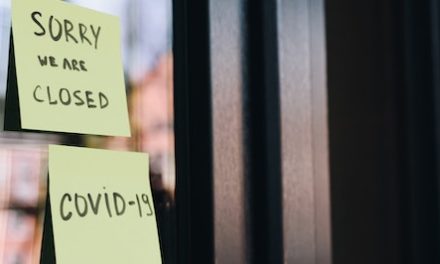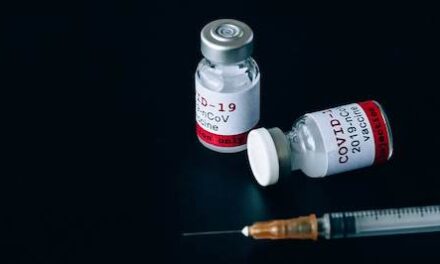Supervised by: Fidelia Hein, BSc. Fidelia holds a Bachelor of Science in International Business from Reutlingen University. She is currently completing her MBA degree at the University of Oxford Saïd Business School. Prior to starting her MBA degree, Fidelia was a business manager at the multinational corporation Olympus Surgical Technologies Europe.
This essay will compare and contrast the precautions and approaches that have been taken to contain or terminate COVID-19, specifically focusing on the differences between Saudi Arabia and Mexico. These countries have taken drastically different approaches towards combating COVID-19, including: the number of vaccines distributed, the different types of vaccines that were distributed, and the precautions taken during the pandemic all vary. Finally, this paper will explore how the differing types of government affected the distribution of the COVID-19 vaccines.
There is a clear link between the speed with which the vaccines have been distributed and the number of people vaccinated so far in Mexico and Saudi Arabia. Mexico has administered at least 51,331,578 doses of COVID-19 vaccines at time of writing. Assuming every person needs two doses, that is enough to have vaccinated about 20.1% of the country’s population (Reuters, 2021). Saudi Arabia has administered at least 20,597,120 doses of COVID-19 vaccines at time of writing. Assuming every person needs two doses, that is enough to have vaccinated about 30.1% of the country’s population (Reuters, 2021). Saudi Arabia has a higher percentage of people vaccinated so far, but this comparison does not account for their vastly different population sizes.
As the number of COVID-19 vaccine types rises, a question develops regarding the frequency of vaccinated people. Do more vaccine types mean more people vaccinated? The vaccines available in Mexico are the following: Pfizer/BioNTech, CanSino, Sputnik, Johnson & Johnson, AstraZeneca, Covaxin, CoronaVac (Snyder and Wiley 2021). The vaccines available in Saudi Arabia are the following: AstraZeneca, Pfizer, Moderna (ArabNews 2021). This clearly shows that more vaccine types has less of an impact than population size, because Saudi Arabia only has three vaccine options and has 10% more of its population vaccinated than Mexico.
The trends seem to suggest, however, that the more precautions taken by the government, the lower the rates of deaths and infections. The COVID-19 precautions in Mexico are the following: wearing a mask over your nose and mouth is required on planes, buses, trains, and other forms of public transportation. The Centers for Disease Control and Prevention (CDC) recommends the following: Travelers who are not fully vaccinated should continue to wear a mask and maintain physical distance when traveling. Avoid crowds and stay at least 6 feet from anyone who did not travel with you. It is important to do this everywhere – both indoors and outdoors. Wash your hands often or use hand sanitizer (with at least 60% alcohol) (CDC, 2021). Throughout Mexico, they use a colored light system to determine whether you can leave the house or not. There are a total of four lights: red, orange, yellow, and green. The red light means “do not go out unless it is essential”, the orange means “if you can, please stay home,” the yellow signifies “resuming limited activity but with caution”, and the green means “you can resume normal activities, but with caution” (Embamex, 2021). The exterior relation of Mexico also stated that, “the color-coded mechanism is updated every two weeks by the federal and state governments with the guidance of Mexico’s Ministry of Health Specialists” (Embamex, 2021). In contrast, precautions in Saudi Arabia regarding COVID-19 are the following: if a person who intends to travel to Saudi Arabia was diagnosed with COVID-19 or was in contact with a person diagnosed with COVID-19, they would have to declare it to health authorities in their country, and not travel until 14 days after diagnosis or last contact. If respiratory symptoms (fever, cough, shortness of breath) are present, they would have to declare it to Health Control Centers. Violations are subject to prosecution (Health Control at Points of Entry Regulation). Anyone who violates these rules would be subjected to fines not exceeding 500,000 Saudi Riyals and held accountable for the consequences of their violation on others (Saudia, 2021).
This long list of precautions from the Saudi Arabian government correlates with how Saudi Arabia has been able to control their COVID-19 deaths below 10,000 at time of writing. On the other hand, Mexico had fewer precautions and saw more than 230,000 deaths. The precautions could be a huge reason why Saudi Arabia was able to control the number of deaths, supporting the theory that taking more precautions causes fewer infections and deaths.
The type of government seems to have made a big impact on a country’s reaction to COVID-19. Mexico is a democratic country that faces more obstacles to implementing new restrictions, due to the long legal process involved in every step taken. Even the former Mexican Secretary of Health stated that “Mexico’s government has refused to face reality and has instead downplayed the magnitude of the crisis while accusing adversaries of exaggerating it for political purposes. This bodes ill both for overcoming the pandemic and for Mexican democracy, as the attempt to generate an alternative narrative perpetuates Mexico’s poor management of COVID-19 — now irrefutably one of the most deficient in the world, with a death rate of 252.7 per 100,000 inhabitants” (Frenk, 2021). This statement illustrates that, because of Mexico’s government type, the containment of COVID-19 has not been very successful there, and even the people living in Mexico have doubts about their own system..
However, Saudi Arabia is an absolute monarchy, meaning the process of implementing a new restriction is far less complex. Some examples of this in practice are the introduction of the Tawakkalna app, lockdowns, and curfews. The Tawakkalna app was developed by the government and all residents are required to download it. If we take a closer look at the Tawakkalna app, it is clear that “all Saudi citizens and residents are now required to activate their Tawakkalna application as proof of their health status before entering offices – both the public and private sectors – as well as commercial complexes and shopping malls” (Hancock, 2021). This app plays a major role in protecting the citizens of Saudi Arabia from COVID-19. This is because the government can use it to monitor how well citizens are complying with various regulations, including where they have been, their proximity to someone diagnosed with COVID-19, and their vaccination status. Usually, monitoring this data in democratic countries like Mexico would lead to many controversies due to privacy debates, yet, because Saudi Arabia has an absolute monarchy, there are no steps to take after the King orders the development of the app. These examples suggest that if the King ordered an emergency procedure it would be implemented quickly, for example seeing people receive their vaccines quickly and reducing the potential cases and deaths.
Overall, both countries had different approaches to the COVID-19 pandemic, but Saudi Arabia arguably did a better job in controlling the pandemic. This choice can be seen due to its quick vaccine distribution, reliable vaccine options, and long-term travel precautions. The autocratic style of government in Saudi Arabia likely goes quite some way towards explaining this difference.
The COVID-19 pandemic has been one of the biggest obstacles many countries have faced in recent history. This unexpected hurdle necessitated quick thinking for every country. Mexico and Saudi Arabia have introduced different precautions and identified different priorities to tackle the virus. Most of these precautions will still need to continue in the following years; as the famous saying goes “it is better to be safe than sorry.”
Bibliography
ArabNews. 2021. Two more COVID-19 vaccines approved for use in Saudi Arabia. [online] Available at: <https://www.arabnews.com/node/1794826/saudi-arabia> [Accessed 15 July 2021].
Embamex.sre.gob.mx. 2021. Mexico’s Covid-19 Monitoring System. [online] Available at: <https://embamex.sre.gob.mx/eua/index.php/en/2016-04-09-20-40-51/tourism/1760-mexi co-s-covid-19-monitoring-system> [Accessed 24 July 2021].
Frenk, J., 2021. How Effectively Is Mexico Fighting the Covid Pandemic? – The Dialogue. [online] The Dialogue. Available at: <https://www.thedialogue.org/analysis/how-effectively-is-mexico-fighting-the-covid-pan demic/> [Accessed 23 July 2021].
Hancock, J., 2021. Tawakkalna app made mandatory in malls and public spaces. [online] Whats On Saudi Arabia. Available at: <https://whatsonsaudiarabia.com/2021/02/tawakkalna-app-made-mandatory-in-malls-and -public-spaces/> [Accessed 23 July 2021].
Reuters. 2021. Mexico: the latest coronavirus counts, charts and maps. [online] Available at: <https://graphics.reuters.com/world-coronavirus-tracker-and-maps/countries-and territories/mexico/> [Accessed 15 July 2021].
Reuters. 2021. Saudi Arabia: the latest coronavirus counts, charts and maps. [online] Available at: <https://graphics.reuters.com/world-coronavirus-tracker-and-maps/countries-and territories/saudi-arabia/> [Accessed 15 July 2021].
Saudia.com. 2021. TRAVEL GUIDELINES AND REQUIREMENTS DUE TO COVID-19. [online] Available at: <https://www.saudia.com/before-flying/travel-information/travel requirements-by-international-stations> [Accessed 15 July 2021].
Snyder, J. and Wiley, M., 2021. Mexico – COVID19 Vaccine Tracker. [online] Covid19.trackvaccines.org. Available at: <https://covid19.trackvaccines.org/country/mexico/> [Accessed 15 July 2021].
Wwwnc.cdc.gov. 2021. COVID-19 in Mexico – COVID-19 High – Level 3: COVID-19 High – Travel Health Notices | Travelers’ Health | CDC. [online] Available at: <https://wwwnc.cdc.gov/travel/notices/covid-3/coronavirus-mexico> [Accessed 15 July 2021].




